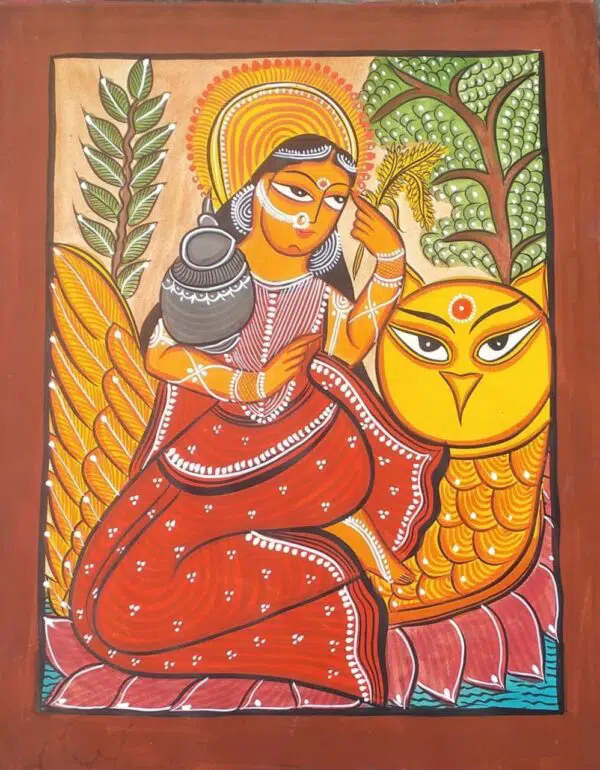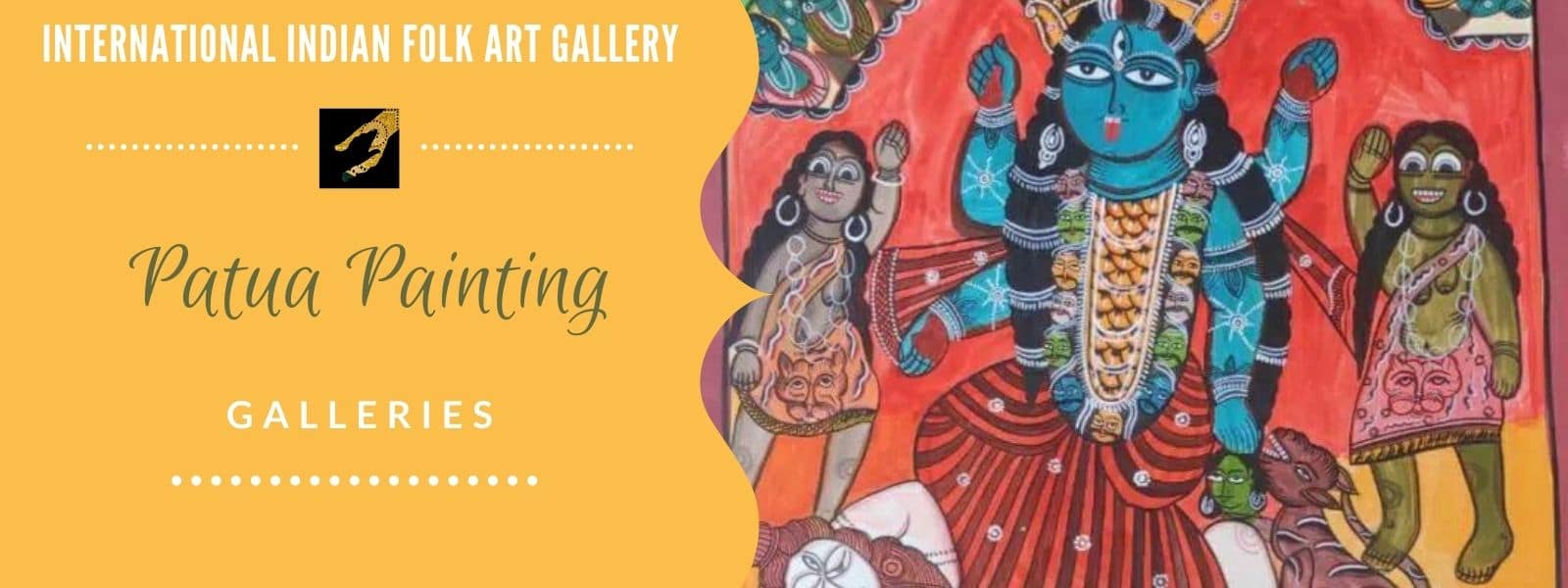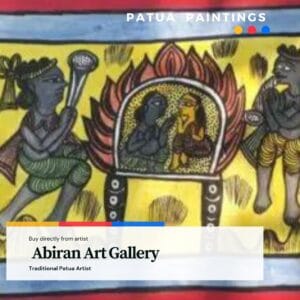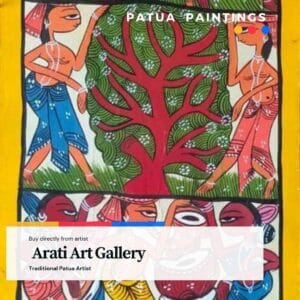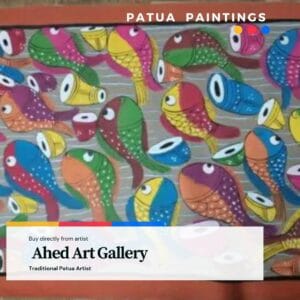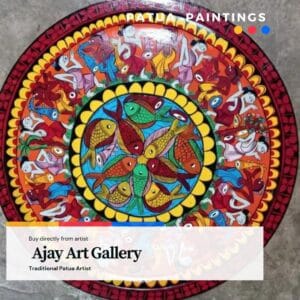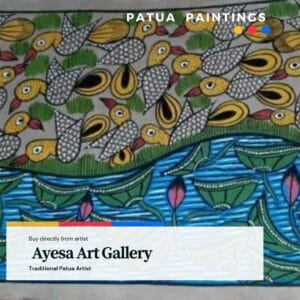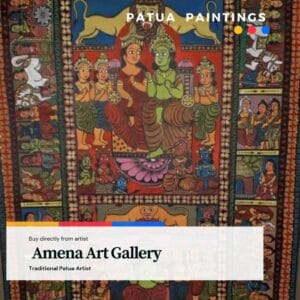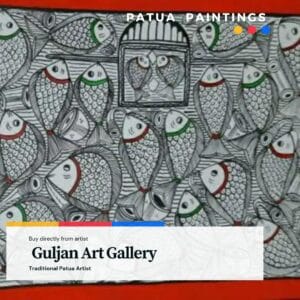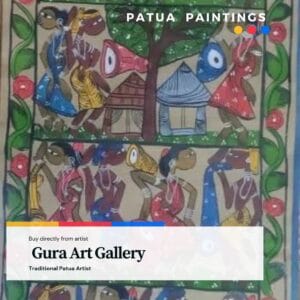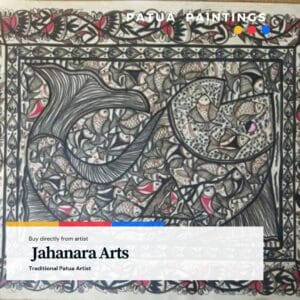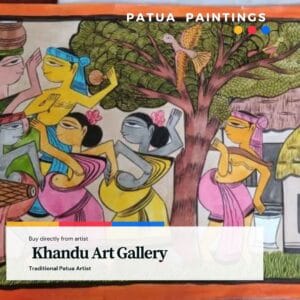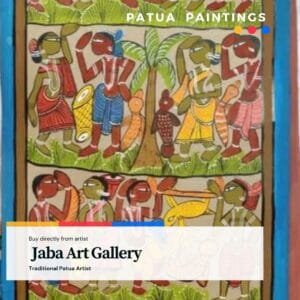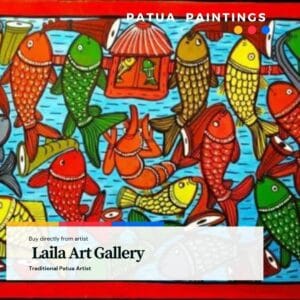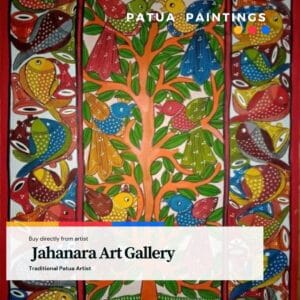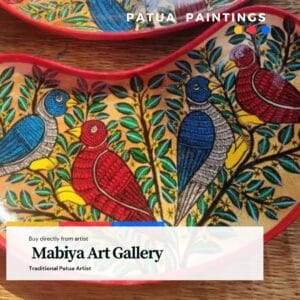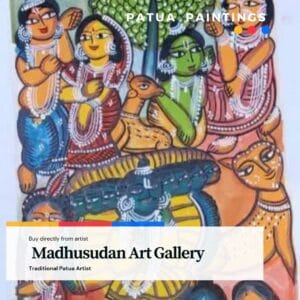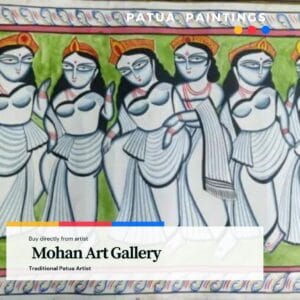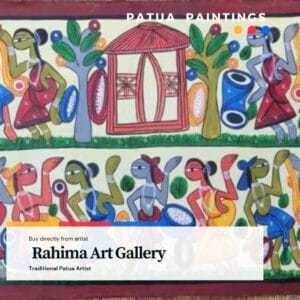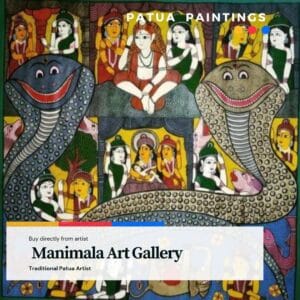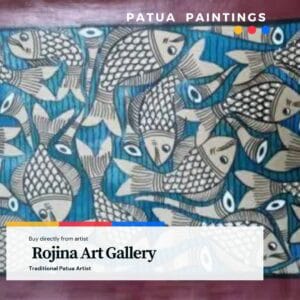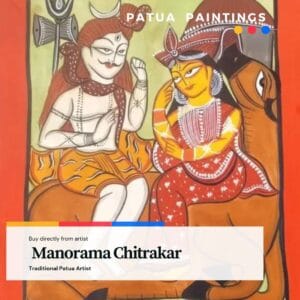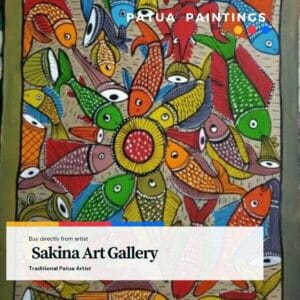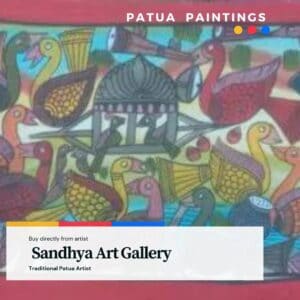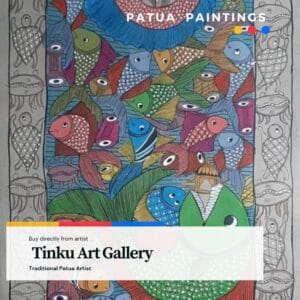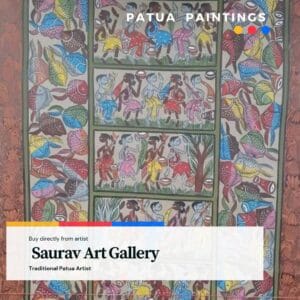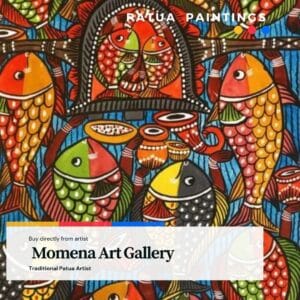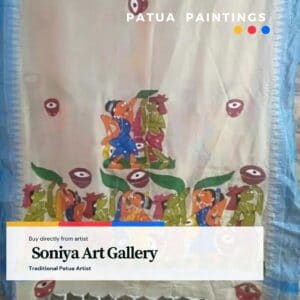Patua Painting
Patua Painting is an India folk painting that originated in West Bengal. This type of art is traditionally drawn on a piece of cloth known as a pati (or patta).
The paintings are stitched onto the scroll, which is strengthened by adding fabric from old saris to the back. Sometimes, one scroll can have a scene or panel from a longer story painted on it. It could also have images of animals or scenes that were made up by the artist.
Patuas, like other traditional painters, began by painting scrolls or patua depicting the mangal stories of the gods and goddesses.
For generations, scroll painters or patuas have gone from village to village telling the mangal stories of the gods and goddesses. People found these scrolls to be a great source of entertainment.
Traditionally, Patua painters used a brush made of bamboo and goat hair. Today, scrolls also depict current affairs, history, and other subjects apart from the traditional themes. Painters use vegetable dyes with vegetable gum fixed on paper.
The Patua are an artisan community found in the Indian states of West Bengal, Bihar, Jharkhand, and Odisha, as well as parts of Bangladesh. Some Patuas are Hindu, while others are Muslim.
Hindu Patuas are active in the Kalighat and Kumartuli regions of Calcutta, as well as other parts of West Bengal. Their population is small.
Although the origin of the Chitrakars is not clear, historical and mythological memories coincide that it is traceable back to the 13th century. The Patua are a unique community who paint and model idols. Chitrakar is a widely-used term for a Patua artist or sculptor. They originated from Patua which means an artist, sculptor or painter.
There are a number of theories about the origin of this community, one of which is that they were cast out when they fell out with their Brahmin priests.
